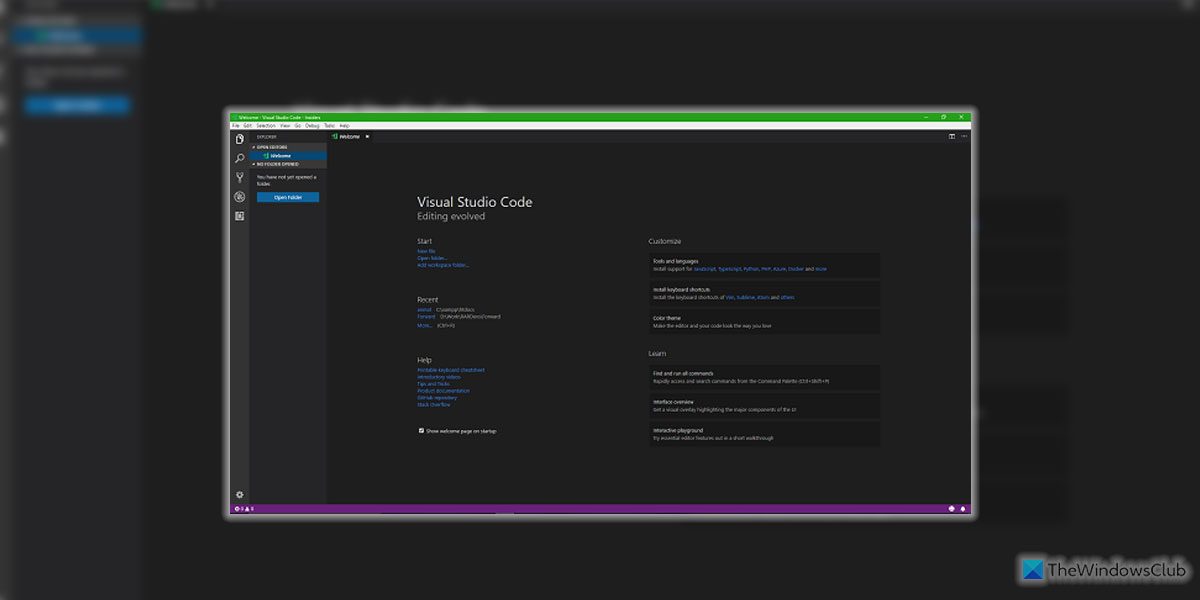How to write & enhance your first program on Visual Studio Code
This Visual Studio Code tutorial for beginners will show you how to compile or write your first program or code. Microsoft added support for extensions in Visual Studio Code. These extensions help to enhance and optimize your code for languages like PHP, C, C++ and more!
Languages supported by Visual Studio Code
According to the webpage published on the official website of Visual Studio Code, the following are the main languages supported by the IDE. They include C++, C#, CSS, Dockerfile, Go, HTML, Java, JavaScript, JSON, Less, Markdown, PHP, Python, Sass, T-SQL, and TypeScript. Now with this, you get some language features that help you write better code. This better code is similar in the track of what we talked about above. So, with support for numerous extensions, we get the rich support for the following: When the language or the file extension is supported by the IDE, you will see the name of that particular language in the Status Bar on the bottom right corner. Else, it will show you markdown or plaintext written. For example: The above image is when the IDE identifies the file as a known type (HTML).
The above image is when the IDE does not identify the file as a known type. Hence, it is mentioned as Plain Text. Now, let us look at how to install and use these extensions to leverage the full advantage of their capabilities.
How to install Extensions on Visual Studio Code
So, in the first step when you open Visual Studio Code, you might see a screen somewhat similar as shown in the snippet below.
After that, click on the Extensions button on the left side vertical menu as shown in the screenshot below.
Then you will see a new panel sliding from the left side itself. In the Search bar of the panel, search for the language or service you want an extension for. I will be searching for an extension for PHP because I will be demoing it. From the list that you get as search results, select the one that is most suitable to fulfill your needs. If you click on the listing of the extension, you will get more details like description, developer’s name, features, size, compatibility, and more.
Once you hit on the Install button, you are good to go! Now as I installed the PHP IntelliSense Extension on Visual Studio Code, it starts displaying smart suggestions and auto-completion for different syntax. Hence, this will decrease the chances of an error and will make the execution and deployment of your application smooth. The real-time example of IntelliSense working with a PHP file is inserted here. Bonus: What did I do to demo? If you are curious to try out what I did now, just follow these quick steps. Install Visual Studio Code and then, search or get the extension for PHP as instructed in the steps above or follow this link marketplace.visualstudio.com. Now create a new file and save it in .php extension for the file. Save and then move the files to the htdocs folder of XAMPP or WWW folder of WAMP. Now, finally open your favorite web browser and enter the local URL for your file. Then you will see an output like this. So, this is how extensions help you to enhance and optimize your code on Visual Studio Code.
What are good Extensions for Visual Studio Code?
There are so many extensions available for Visual Studio Code that you can install and use to enhance your productivity. For example, you can use Atom One Dark Theme, TabOut, Snippets, Shortcuts, Git Graph, etc. In other words, you need to take a deep look into the official repository and check which is suitable for your purpose.
How do I make my Visual Studio Code better?
Although the default installation is handy, it may not be perfect for each purpose. In that case, you need to tweak a few things as per your requirements. The easiest way to make the VS Code better for your work is by installing extensions. There are countless extensions available for VS Code, and you can check them one after one to start the installation process. I hope you find it easy to understand.
